The Middle Ages has been in the news lately.
As medieval scholars converge at their annual megaconvention in Kalamazoo, they carry with them recent analyses that traditional medieval studies both contains and feeds into elements of the burgeoning white supremacy movement, with its interpretation, now deemed inaccurate, of a pure white Christian Europe battling forces that wish to annihilate it (especially Jews and Muslims).
The biopic Tolkien focuses on an author many have claimed in his medieval-inspired fantasy world also equated the good and the great with the blond and the white (rather simplistically, I might add).
And on a less overtly political level, the mega hit Game of Thrones offers the viewer, I think in a playful postmodern fashion, almost every element of what we deem to be traditional medieval tropes in a complex fantasy world. The open-ended medieval and Renaissance romance with its complicated interlacing of multiple storylines lends itself well to the serial format of a television series.
My contribution to the medieval buzz this week is a brief introduction and analysis of the reign of King William II, aka “Rufus,” (1056-1100 A.C.E.; reigned 1087-1100) because of his red hair and/or ruddy complexion. He was the third son of William the Conqueror and his wife Matilda.
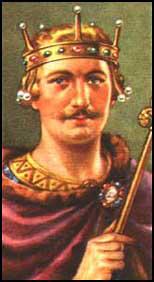
William laid claim to the English throne through a supposed promise to ascend it by the Saxon king Edward the Confessor. Whatever the truth to that promise, he invaded England in 1066. After the Battle of Hastings, he set up England as one of his fiefs, using the country as part of his plan to ascend to the highest rank in the feudal hierarchy like the French king in Paris.
Note that the Normans at that time spoke French, saw themselves as French (despite their descent from Vikings), and England was but one part of their amalgamation of fiefs, the most important of which was Normandy, in France.
After William died, his eldest son, Robert Curthouse, inherited Normandy, the most important fief (more on him below).
William Rufus inherited England. He was a strong ruler politically, but he was hated, deemed a tyrant, by the Saxon population of England, as he was consolidating, often brutally, the Norman presence, not just in England, but also in Scotland, and less successfully, in Wales. In fact, he actually put down a rebellion by the barons who wanted Normandy and England under one ruler, Robert. William reduced Robert to a subordinate status and his brother then went on the First Crusade (and survived).
Several historians or chroniclers of the period seemed to have thought that “sodomy” was going on in the dissolute court of William. For example, Ordericus Vitalis in his Historia Ecclesiastica complained that at the court of William, "the effeminate predominated everywhere, and revealed [reveled?] without restraint, while filthy catamites, fit only to perish in the flames, shamelessly abounded themselves to the foulest practices of Sodom." The Normans supposedly brought this “unnatural vice” to England when they invaded in 1066, but one wonders if the Saxon chroniclers were showing a xenophobic bias here.
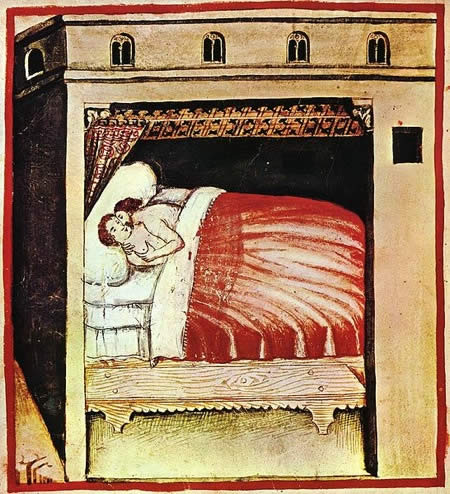
Was William gay? William never married (in fact, there don't seem to be any women concubines either in the picture, not uncommon, much to the chagrin of churchmen, many of whom themselves hypocritically kept women and boys) and spent much of his time, when not at war, hunting with the “guys,” and, if the report by Ordericus contains elements of truth, enjoying sex with men.
He was thus, also according to reports of the time, both “bellicose” and “flamboyant.” One could claim this combination of excessively passionate personality traits made him quite difficult to deal with. In other words, he was probably an asshole, and I use that pejorative intentionally. It reveals the condemnation of same-sex sexual relations, or more specifically, the act linked with gay sex, anal intercourse.
The famous bishop Anselm approached him, concerned about the rumors and possible scandal. William and Anselm did not get along. William had preferred to receive religious advice from a Frenchman, Lanfrac, and he found Anselm's strong Anglo-Saxon presence and overall refusal to let William make decisions in the appointment of bishops insufferable.
William died in 1100 after a hunting accident. He was shot in the back with an arrow and killed while hunting in the New Forest in Hampshire. The incident was probably an assassination, and Rufus’ alleged slayer, Walter Tirel, lord of Poix in Ponthieu, may have been acting under orders from the king’s younger brother, Henry.
The Saxon population rejoiced upon the death of the tyrant.
His brother Henry I, totally heterosexual, with a saintly wife, Matilda, popularly known as Good Queen Maud, promptly seized the throne.
But Robert Curthouse, was also accused of sodomy by Ordericus Vitalis (Robert supposedly picked up this practice from the East via the Crusades). One could claim that the above shows the “gay gene” runs in families, as even Henry's son William Atheling, who drowned in a shipwreck, was also accused of this crime.
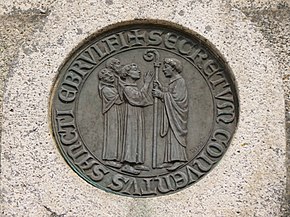
One could argue all these accusations could correspond to a moral panic, which often occurs when a society is in a state of transition on many levels. Thus, one wonders if there was truth to all these allegations, given the political social disorder resulting from the uneasy relationship between Normans and Saxons. The Saxon chroniclers, mostly clerics like Anselm who hated the foreign Normans, might have been conveniently scapegoating these individuals.
One could also gather that, based on the numerous discussions of them in several texts of the period, that same-sex relationships occurred frequently in military and clerical structures.
Yet, also remember that in aristocratic circles of that time women from their girlhoods were socialized separately from men during that period. William spent most of his life hanging out with the guys. Whether his marrying a woman (which would most probably have been a political than a love match anyway) would have revealed a bisexual or heterosexual orientation one will never know. As far was we know, he was not connected with any woman or women sexually.
I think the key to the lethal tension in William's personality is reflected in the art and architecture of the period. The great 12th century renaissance that encompassed all aspects of culture from economic development, centralization of Papal power, the beginnings of more defined national identities after centuries of warring feudal factions, and a flowering of spiritual and philosophical thought, had not occurred.
William, like his famous father, was a Norman, and the architecture that bears that name, also called Romanesque, is solid, fortress-like, like the castles of the feudal barons. The churches boast thick walls, rounded arches, dark interiors. The technology that produced the elaborate vaulting and traceries, the stained glass, of Gothic was not there, yet. Each church was an like an island protecting itself from warring forces. The head of the Church, Christ is a stern king and judge who demands fealty from his vassals.
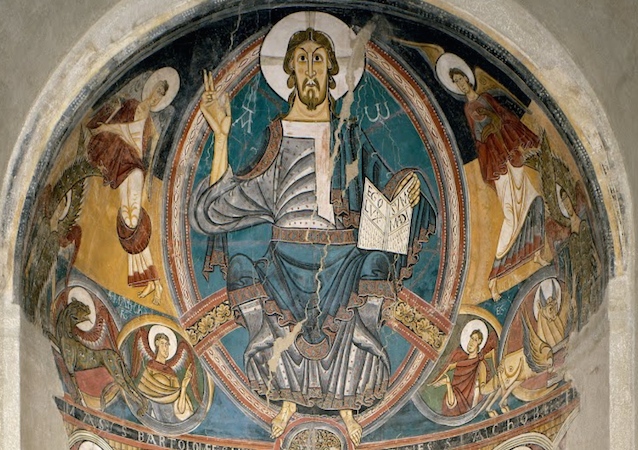
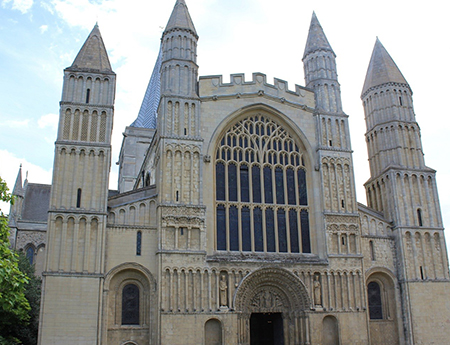
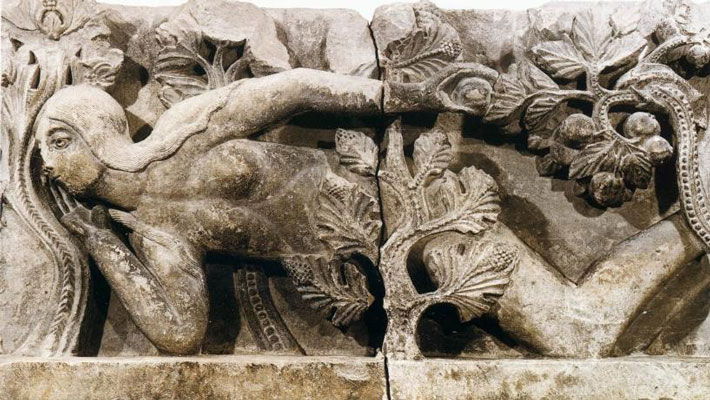
Yet the paintings of the period present a quite unusual contrast, resembling the dreamlike surrealism of a much later period. Elongated, ghostly forms float in positions that attempt to defy the rigid hierarchical space they dwell in. The body is thus but a phantom compared to the immortal soul on its way to its home in God. The world of nature offers only temporary, transitory, pleasures. Nature's role is to reproduce itself (thus, absolutely no gay sex) in order to maintain its place as the mirror of God's endless life.
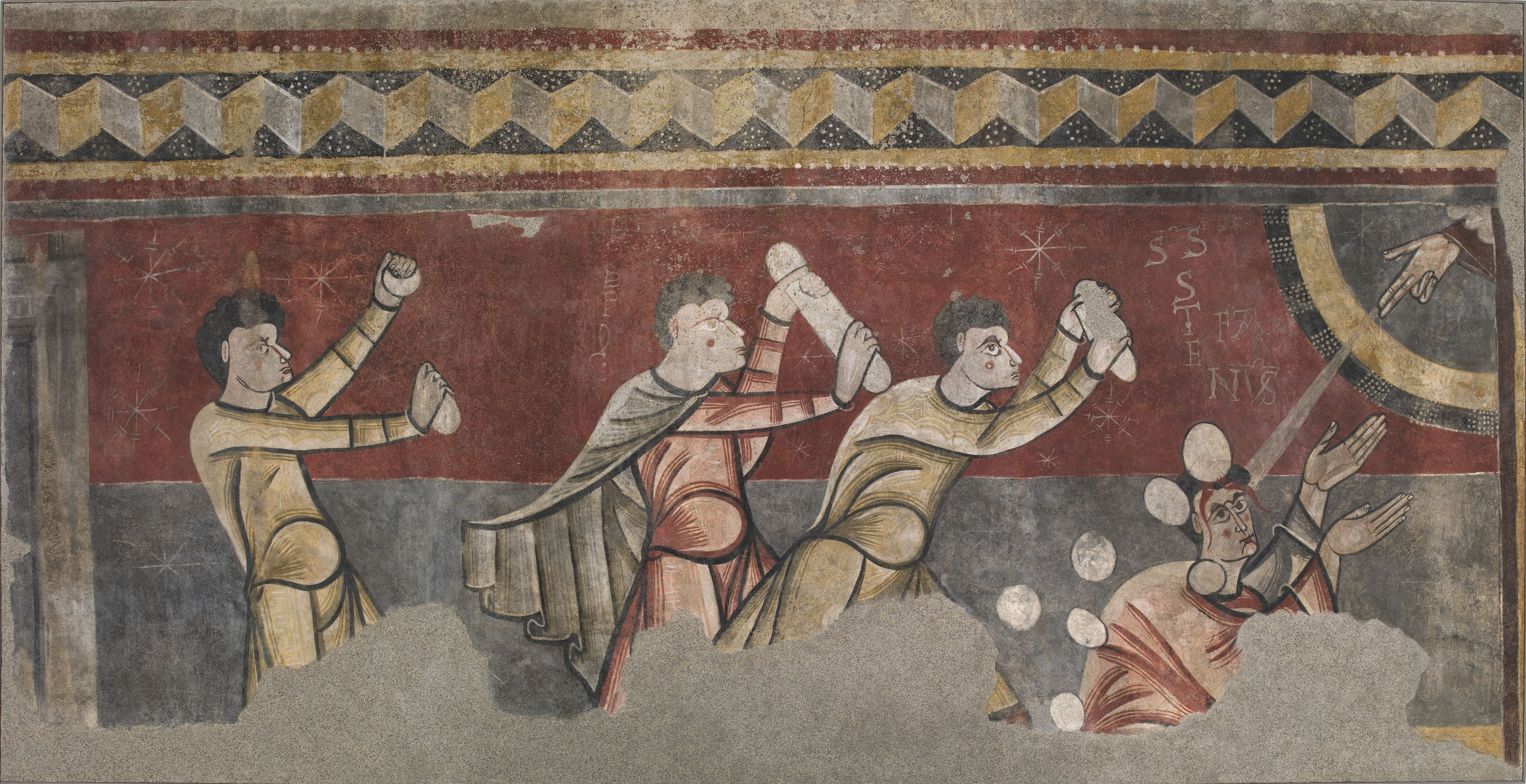
As the Church in the late 12th and 13th centuries achieved temporal and spiritual dominance in Europe (despite the failure of the Crusades), the splendor of cathedrals like Notre Dame overshadowed the growing intolerance of any deviation from social and religious norms. The light that illuminated the stained glass took another form: the fires that burned copies of the Jewish Talmud, heretics, and men who loved men.
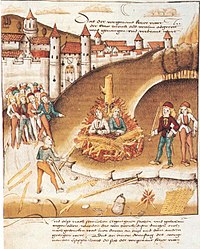
Sources: Britannica.com; a dash of Wikepedia, and, yes, believe it, my memory.






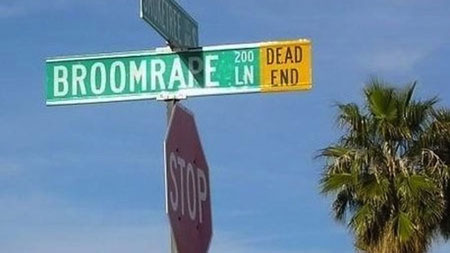
 Join our Email List
Join our Email List Like Us on Facebook
Like Us on Facebook Instagram
Instagram Youtube
Youtube Follow Us on Twitter
Follow Us on Twitter Follow us on Pinterest
Follow us on Pinterest